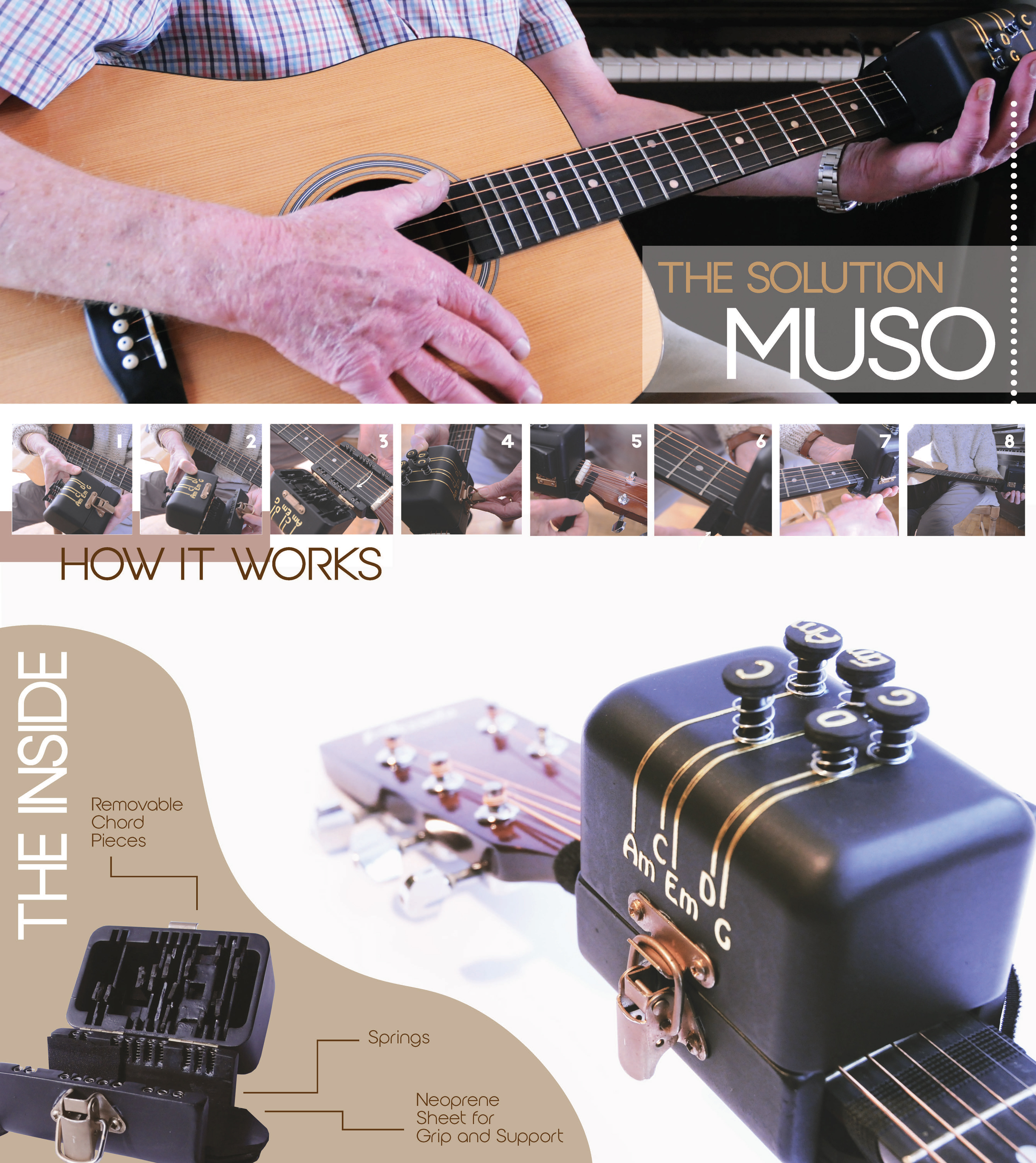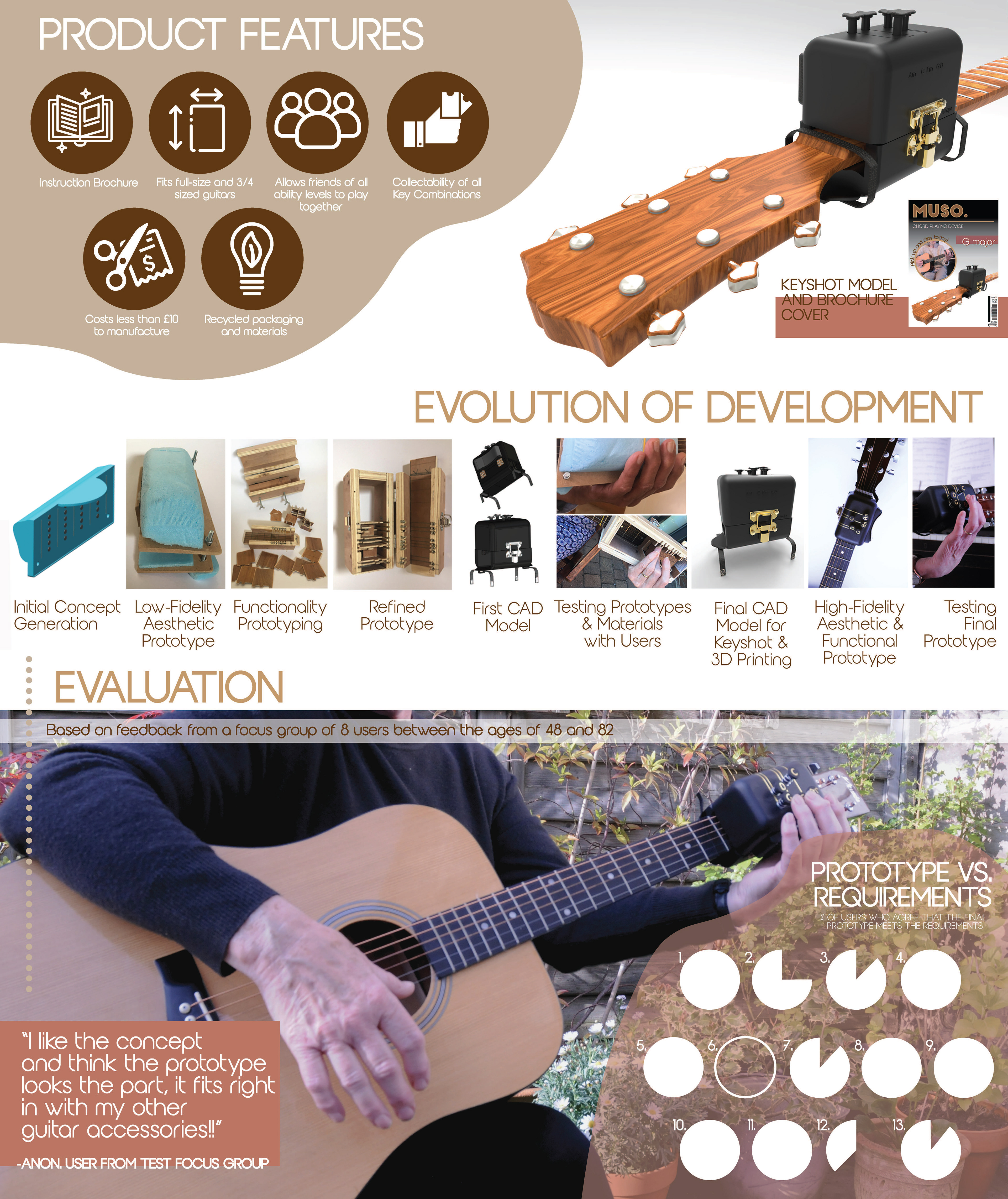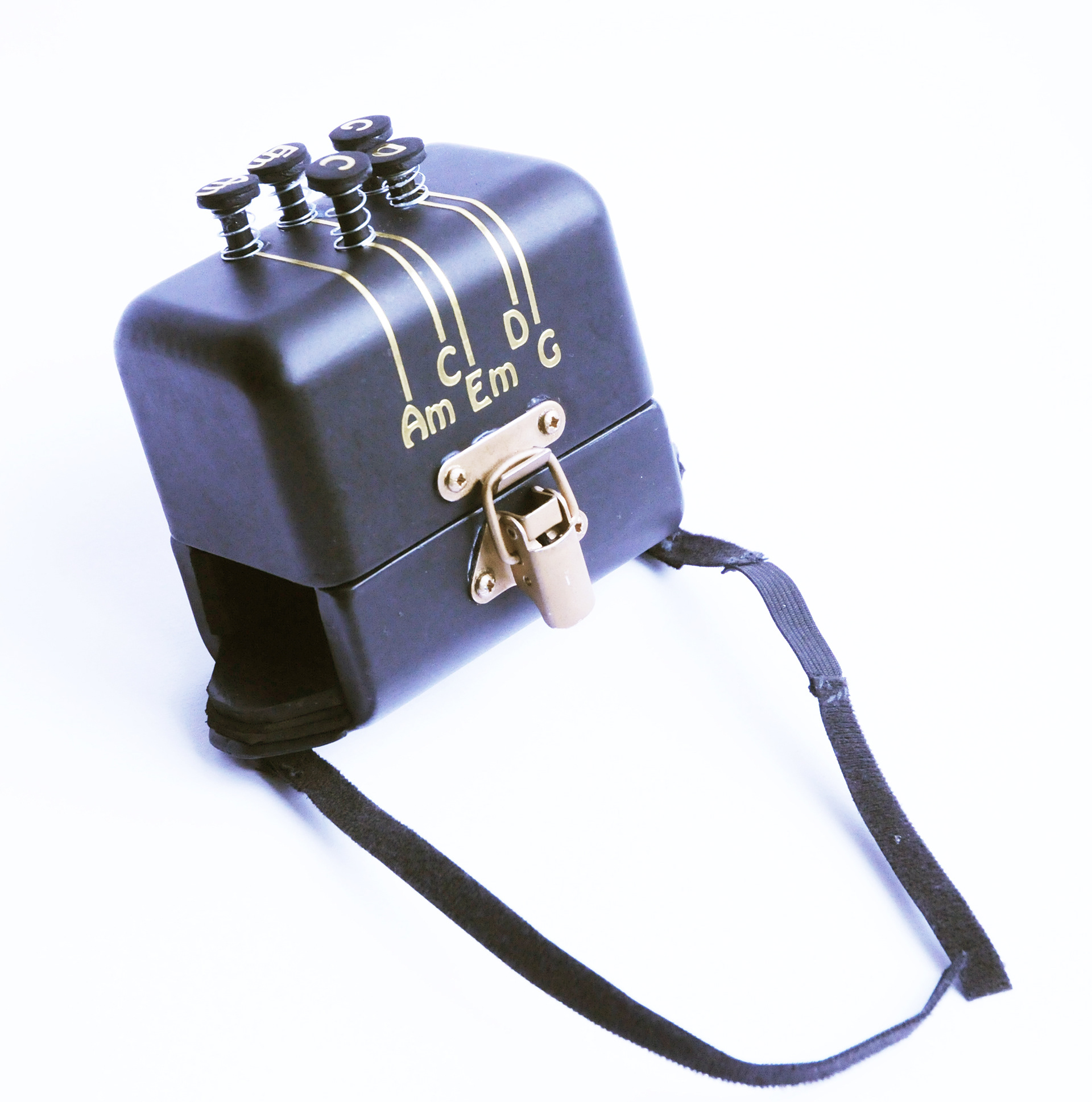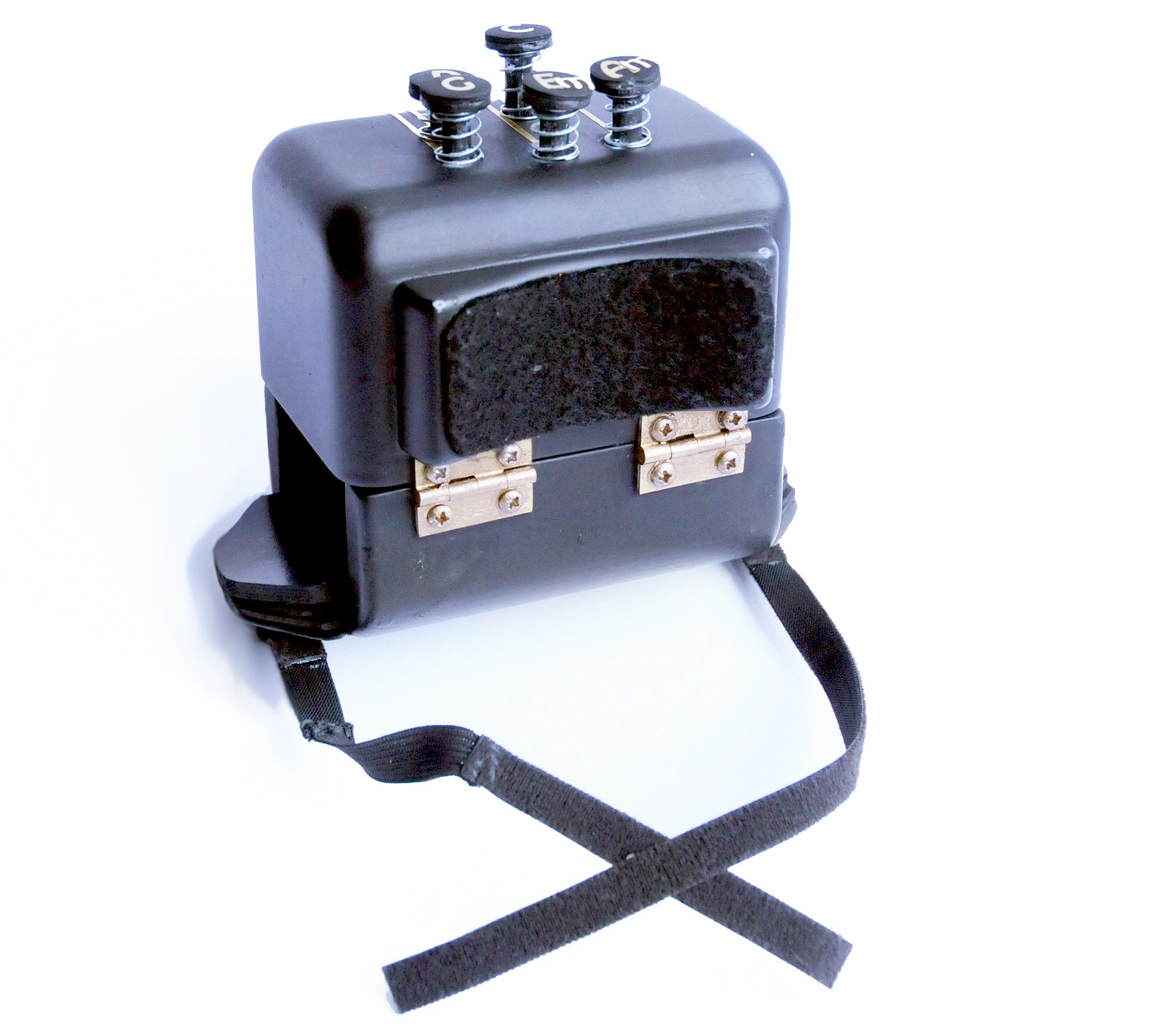


The Muso device was a product designed for my final year project. It is a fully mechanical device that attaches to the neck of a guitar and supports the user with playing chords. This specific prototype is designed in the key of G major as it is the most common key for writing songs - this includes the chords C G Em Am and D. The overall concept would be that multiple devices would be created in different keys e.g. C major and D major (the 2nd and 3rd most common writing keys) and would allow the users to play songs solo or group together with multiple players for more complex sounds and melodies.
The initial motivation for the device was the prompt to design something to aid wellbeing for older adults. The struggles for older adults are a very relevant topic in the current media climate and I found the majority of my secondary research journals dated within the past 5 years. This meant that I was able to develop a product that was unique and current as well as aiding a real-life problem that will hopefully target a topical market. Older adults (60+) are a demographic named the "Silver Economy" and equates to over £3 trillion in Europe alone. Due to population shifts, the market is growing annually and is set to be worth over £5 trillion by 2050.
The mechanical function of the design allows the user to still take part in theoverall multi-sensory experience of actually playing the guitar, as opposed to an electronic device doing the work for the user. The product still allows the user to use pressure in different ways to create different sounds. This lack of electronic components is also in keeping with the kinaesthetic nature of playing an acoustic guitar whereby the tactile interactions create the sounds in response rather than risking the user becoming an accessory to the device. This is additionally important as a recent study by Avner Caspi in 2017 highlighted that older adults can often feel intimidated by new technologies and this can knock their confidence when trying new tasks, sometimes preventing them from wanting to try the task at all.
While there may be many products on the market aimed at older adults to support physical ailments, these products are often medical devices. These products are designed to aid the users with necessary daily activities; there are few products to aid with leisure activities. Hobbies and recreational activities are a vital part of positive wellbeing and clearly an overlooked market when it comes to older adults. Muso is a device that shows users that you are do not have to stop doing hobbies you once loved due to physical ailments that develop due to age. The concept behind Muso is that the device provides an aid to the user in the form of a musical accessory and, can be viewed as a musical tool such like a capo or a reverb pedal, rather than a medical device. The materials and colour scheme also align to this style, coloured with sleek black and metallic finishes, in alignment with other musical accessories on the market. This negates the risk of reminding the user of their disabilities or struggles and heightens the positive mental response while in use.
The USP of the Muso device incorporates the entire product. This includes the packaging and booklets that are sold along with it. The overall concept of accessibility runs throughout the interaction with the product from beginning to end with consideration for the user having the option to fix the product themselves if it were to get broken for any reason.
The design process for this project spanned across my entire final year and included many iterations of prototyping and user-testing. The above image highlights a timeline of the main parts of this process.
This image highlights the usability of the prototype. I simply handed over the product to the user (a female aged 71) and asked them to interact with it however they assumed. Due to the simplistic nature of the design, the user was able to attach and use the product correctly first time.


